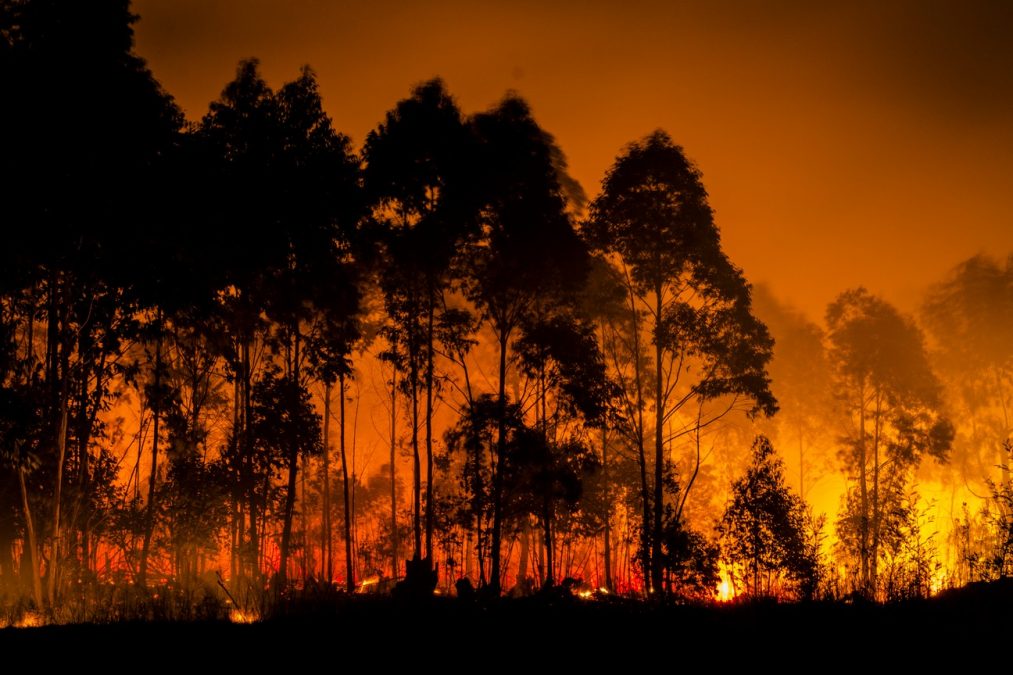When it comes to protecting your investment, wildfire mitigation should be the first item on your list.
No one wants to think about the worst-case-scenario or worry about things they have no control over, like losing their home in a wildfire. Except you have more control than you might think, says Scott Carlson, owner of All Weather Services. His business is dedicated to minimizing that risk by implementing a series of fire mitigation techniques.
“People think that because they live in a subdivision that they’re somehow protected, but that’s not necessarily true. They don’t believe it’s worth it or necessary to spend the money to do fire mitigation around their homes,” Carlson says. “But the risk of wildfires is only getting worse.” Carlson sites factors like the record high winds and strong gusts this spring combined snowpack that is 80% of what is normal, combined with what is expected to be a dry, hot, summer to follow. “The risk is real,” he says.
Wildfires are most often caused by one or more of several different factors, Carlson says: Ground fuel, drought caused by lack of rain or snow, topography, lightning strikes, and human error.
Colorado is in another drought and the topography of Routt County can sometimes pose increased risks, especially for houses that are near ravines. “Fire spreads faster when it’s going uphill and through ravines or gullies, where the fire has the most ability to capture the wind,” Carlson says. “We get lightning strikes all the time in this area, and when combined with drought and wind and topography, that’s when wildfires erupt. Or if someone leaves a campfire unattended or carelessly drops a cigarette butt, especially in a construction site, it can start a fire that quickly gets out of control.”

Carlson says it’s important for buyers shopping for a new home to understand wildfire mitigation, because how well a property is protected is a key factor in determining homeowner’s insurance rates, or if the property is insurable at all. Adjustors will sometimes require modifications be made to a property that can become rather costly. Additionally, Carlson says, wildfire mitigation is not something that’s assessed during inspection, so it can often pose an unanticipated cost for a new property owner. “So many of my clients tell me, ‘I wish I would have known more about wildfire mitigation and the costs associated with it when I bought my home, so that I would have been more prepared or would have budgeted for it,’” Carlson says. He works closely with insurance companies to make sure the work that he does meets their guidelines so that they will then be willing to underwrite a policy.
While most of these variables are out of our control, protecting your home from going up in smoke is possible. “Fire mitigation involves the creation of what’s known as ‘fire breaks’ or defensible space,” Carlson says. “Defensible space is the area around a home that has been modified to reduce fire hazard.”
Carlson tells us how it’s done:
- Minimize or eliminate vegetation within 30 feet of your house, including trees and shrubs (those that are low growing and not considered flammable are fine).
- Make sure grass is mowed frequently and never grows taller than six inches.
- In the area between 30-150 feet away from your home, reduce what are known as “ladder fuels,” or vegetation like scrub oak, grasses, and tall trees with branches that can catch fire and spread. Make sure any trees in this zone are pruned to between 6-10 feet high to reduce ladder fuel risk.
- Your driveway should be at least 30 feet wide to be able to accommodate emergency vehicles and give them a safe passage to your property. A driveway this wide will also provide a fire break.
- Assess the type of vegetation you have on your property: many of the plants that are common in Routt County such as scrub oak, sarvis berry bushes, and cottonwood trees pose an increased fire risk, and should be removed if they grow within 150 feet of your home.
- If you are looking to buy new property, be sure to assess wildfire risk. Properties in low lying areas or in high wind zones that have high forest density are the most susceptible. Or if the property has a lot of acreage, make sure defensible space has been created within 150’ of the house.
To contact Scott Carlson for more information, or to receive a free estimate, call (970) 218-0179 or email allweatherservicesllc@yahoo.com.

